This article was co-authored by Tu Anh Vu, DMD and by wikiHow staff writer, Sophia Latorre. Dr. Tu Anh Vu is a board certified dentist who runs her private practice, Tu's Dental, in Brooklyn, New York. Dr. Vu helps adults and kids of all ages get over their anxiety with dental phobia. Dr. Vu has conducted research related to finding the cure for Kaposi Sarcoma cancer and has presented her research at the Hinman Meeting in Memphis. She received her undergraduate degree from Bryn Mawr College and a DMD from the University of Pennsylvania School of Dental Medicine.
There are 19 references cited in this article, which can be found at the bottom of the page.
This article has been viewed 30,925 times.
Whitening your teeth can help you feel more confident about yourself. However, it can also lead to sensitive or irritated gums.[1] Don’t worry, though. There are several steps you can take to protect your gums during teeth whitening to minimize discomfort and still end up with a stunning smile!
Steps
Visiting Your Dentist before Whitening
-
1Make an appointment for a dental exam and cleaning. Before you start any whitening treatments, you should see your dentist.[2] They can take x-rays, give you an exam, and treat any dental issues you have. You should also get your teeth cleaned, as whitening treatments will be more effective and even on clean teeth.[3]
- For instance, you should get cavities filled before whitening your teeth to prevent compounded problems and pain from the bleach.[4]
-
2Ask your dentist to recommend a whitening treatment. Your dentist will be able to examine your teeth and suggest the best whitening method for your particular case. They can also recommend products or strategies to help you protect your gums while whitening your teeth. The type of discoloration you have will dictate the best treatment.[5]
- For instance, your teeth may have extrinsic stains in which the enamel, or outer layer of your teeth, is discolored from eating or drinking dark foods and beverages, like coffee and wine, or from smoking or chewing tobacco.[6]
- Alternatively, your teeth may have intrinsic stains, in which the interior dentin is discolored from excessive fluoride or certain medications like chlorhexidine, minocycline, or even antihistamines.[7]
Advertisement -
3Follow your dentist’s advice carefully for best results. Your dentist may recommend a treatment done in the dental office, in which case they will take care to protect your gums during the whitening treatment. Usually, the dentist will use a stronger solution to whiten your teeth than is available over-the-counter, and they may use lights or a laser to speed up the process.[8]
- Otherwise, your dentist can recommend an at-home treatment, such as bleaching trays or whitening strips. Ask for suggestions on which brand to use if they suggest an over-the-counter remedy, and never use a stronger bleaching agent than recommended by your dentist.[9]
Using At-Home Whitening Treatments
-
1Select custom-fitted trays if applicable. If your dentist recommends using bleaching trays, avoid buying a kit with “one size fits all” trays.[10] These trays are likely to be bigger than your teeth, meaning the bleach will be pressed against your gums, causing sensitivity or irritation. Instead, opt for custom-fitted trays. Your dentist can make these for you, and there are also kits in which you make a mold of your mouth, send it to a lab, and receive custom trays back.[11]
-
2Trim whitening strips to fit your teeth if necessary. Whitening strips are often much larger than your teeth and therefore end up depositing whitening gel onto your gums, causing pain or sensitivity. Before using whitening strips, hold them up to your teeth to determine how well they fit. If necessary, use a sharp pair of scissors to trim off the excess material.[12]
-
3Apply a desensitizing gel to your gums before whitening your teeth. If you have sensitive gums, you may want to use a desensitizing gel before a whitening treatment. Ask your dentist for a recommendation, then apply the product as directed. In general, you will spread a light layer of this desensitizing gel over your gums a few minutes before each whitening treatment to protect them from the bleach.[13]
-
4Remove excess whitening gel or bleach from your gums. After you put in the bleaching trays or apply the whitening strips, use a tissue to wipe off the excess gel from your gums. This prevents the bleach from irritating your gums and protects them from the minor chemical burns that cause discomfort.[14]
- If necessary, you can reapply the desensitizing gel with a cotton swab if you wiped it off along with the excess whitening gel or bleach.
-
5Leave the strips on or trays in for the recommended amount of time only. Don’t leave the whitening strips on or the bleaching trays in for a longer period of time than the directions suggest, as this can lead to pain or sensitivity. It also will not help get your teeth whiter. Follow the directions carefully, and remove the strips or trays after the recommended amount of time.[15]
- You can repeat the treatment the following day to whiten your teeth even more if desired.
Dealing with Sensitivity
-
1Use a toothpaste formulated for sensitive teeth and gums. There are many types of toothpaste designed for use on sensitive teeth and gums readily available. Generally, these products contain potassium nitrate, which actually works to desensitize your teeth and gums. If whitening your teeth has caused you pain or sensitivity, use one of these toothpastes in place of your usual kind to reduce irritation.[16]
-
2Switch to a weaker whitening agent if you experience problems. If your gums are sore, tender, or irritated after the first whitening treatment, the bleach or solution may be too strong.[17] Generally, over-the-counter products have a concentration of carbamide peroxide ranging from 10-20%.[18] If your product has a concentration above 10%, switch to a lower concentration for the next round of whitening.[19]
-
3Avoid whitening your teeth when your gums are sensitive. If your gums are already irritated or sensitive due to whitening treatments, you should avoid doing any more treatments until they heal. Not only will this protect your gums, but it will protect your teeth as well. Once your gums have healed and you no longer experience pain, irritation, or sensitivity, you can resume the whitening treatments.[20]
-
4Touch up your teeth only after 4-6 weeks. Once you have whitened your teeth to a desirable shade, don’t continue to bleach them frequently. This can lead to oversensitivity of your teeth and gums. Plus, your teeth will only get so white, so you may end up wasting your money. Aim to do another bleaching treatment every 4-6 weeks, but no more often than that.[21]
Expert Q&A
-
QuestionAre teeth whitening strips safe to use?
 Tu Anh Vu, DMDDr. Tu Anh Vu is a board certified dentist who runs her private practice, Tu's Dental, in Brooklyn, New York. Dr. Vu helps adults and kids of all ages get over their anxiety with dental phobia. Dr. Vu has conducted research related to finding the cure for Kaposi Sarcoma cancer and has presented her research at the Hinman Meeting in Memphis. She received her undergraduate degree from Bryn Mawr College and a DMD from the University of Pennsylvania School of Dental Medicine.
Tu Anh Vu, DMDDr. Tu Anh Vu is a board certified dentist who runs her private practice, Tu's Dental, in Brooklyn, New York. Dr. Vu helps adults and kids of all ages get over their anxiety with dental phobia. Dr. Vu has conducted research related to finding the cure for Kaposi Sarcoma cancer and has presented her research at the Hinman Meeting in Memphis. She received her undergraduate degree from Bryn Mawr College and a DMD from the University of Pennsylvania School of Dental Medicine.
Board Certified Dentist Yes, teeth whitening strips are generally very safe. Just know that it won't give the same results as a professional whitening treatment and be sure to brush your teeth first before putting the strips in. Whitening stripes are not recommended for people with braces or restorative work, such as fillings, veneers, crowns, or dentures.
Yes, teeth whitening strips are generally very safe. Just know that it won't give the same results as a professional whitening treatment and be sure to brush your teeth first before putting the strips in. Whitening stripes are not recommended for people with braces or restorative work, such as fillings, veneers, crowns, or dentures. -
QuestionWhat toothpaste helps sensitive gums?
 Tu Anh Vu, DMDDr. Tu Anh Vu is a board certified dentist who runs her private practice, Tu's Dental, in Brooklyn, New York. Dr. Vu helps adults and kids of all ages get over their anxiety with dental phobia. Dr. Vu has conducted research related to finding the cure for Kaposi Sarcoma cancer and has presented her research at the Hinman Meeting in Memphis. She received her undergraduate degree from Bryn Mawr College and a DMD from the University of Pennsylvania School of Dental Medicine.
Tu Anh Vu, DMDDr. Tu Anh Vu is a board certified dentist who runs her private practice, Tu's Dental, in Brooklyn, New York. Dr. Vu helps adults and kids of all ages get over their anxiety with dental phobia. Dr. Vu has conducted research related to finding the cure for Kaposi Sarcoma cancer and has presented her research at the Hinman Meeting in Memphis. She received her undergraduate degree from Bryn Mawr College and a DMD from the University of Pennsylvania School of Dental Medicine.
Board Certified Dentist Choose a toothpaste labeled for sensitivity. It will help improve the sensitivity of both your teeth and gums.
Choose a toothpaste labeled for sensitivity. It will help improve the sensitivity of both your teeth and gums.
Warnings
- Avoid whitening your teeth if you are pregnant or nursing.[22]⧼thumbs_response⧽
References
- ↑ https://crosslanddentalassociates.com/what-are-the-most-common-side-effects-of-teeth-whitening/
- ↑ https://www.adha.org/sites/default/files/7227_Tooth_Whitening_1.pdf
- ↑ https://www.researchgate.net/publication/221875859_Pre-bleaching_exam_vital_for_optimum_whitening
- ↑ https://southspringsdentalgroup.com/wp-content/uploads/2015/12/Bright-Rewards-Consent.pdf
- ↑ https://my.clevelandclinic.org/health/diseases/10958-tooth-discoloration
- ↑ https://emedicine.medscape.com/article/1076389-treatment
- ↑ https://www.researchgate.net/publication/264393077_Medication-related_tooth_discoloration_A_review
- ↑ http://www.deardoctor.com/articles/teeth-whitening-questions-answered/
- ↑ https://www.ncbi.nlm.nih.gov/pmc/articles/PMC4058574/
- ↑ https://www.sciencedirect.com/science/article/pii/S2352451021000020
- ↑ https://www.castlehillsdentistry.com/how-to-protect-gums-during-teeth-whitening/
- ↑ http://www.dynamicdentalinc.com/blog/what-you-should-know-before-using-teeth-whitening-strips
- ↑ https://www.prevention.com/beauty/natural-beauty/dangers-teeth-whitening
- ↑ https://www.reservoirsmiles.com.au/whitening.html
- ↑ https://www.ncbi.nlm.nih.gov/pmc/articles/PMC4058574/
- ↑ Tu Anh Vu, DMD. Board Certified Dentist. Expert Interview. 10 April 2020.
- ↑ https://kidshealth.org/en/teens/teeth.html
- ↑ https://www.tjo.org.tw/cgi/viewcontent.cgi?article=1046&context=tjo
- ↑ https://www.ncbi.nlm.nih.gov/pmc/articles/PMC4058574/
- ↑ http://www.deardoctor.com/articles/teeth-whitening-questions-answered/
- ↑ https://avalondentalcare.net/how-often-can-i-whiten-my-teeth/
- ↑ https://borovacdentistry.com/whiten-teeth-pregnant-nursing/
About This Article
To protect your gums during teeth whitening, apply a thin layer of desensitizing gel to your gums a few minutes before each whitening treatment. Wipe any excess whitening gel or bleach off your gums after applying the whitening strips or bleaching trays. Avoid leaving the strips on or trays in for longer than the recommended amount of time. To learn more about choosing the right products and dealing with sensitivity, keep scrolling...
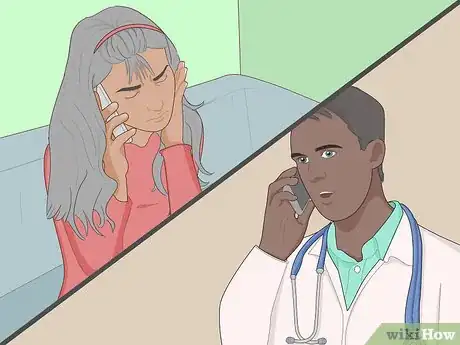
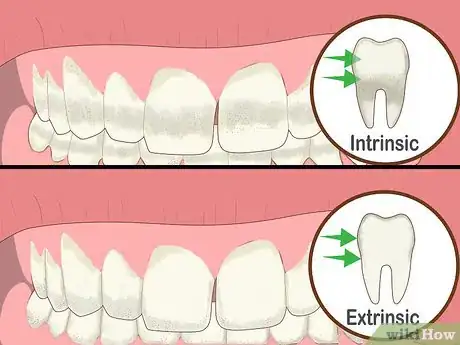
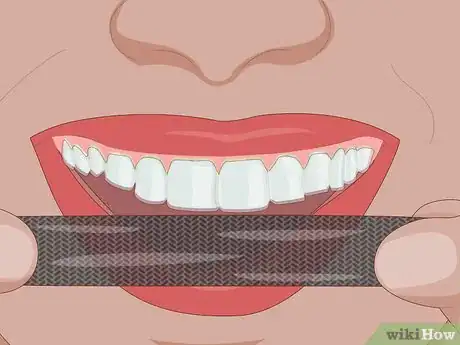
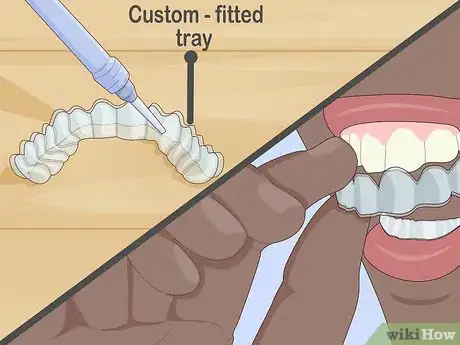
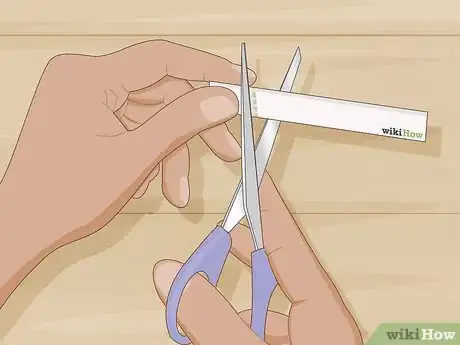
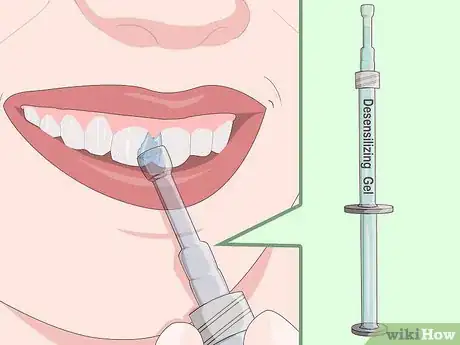
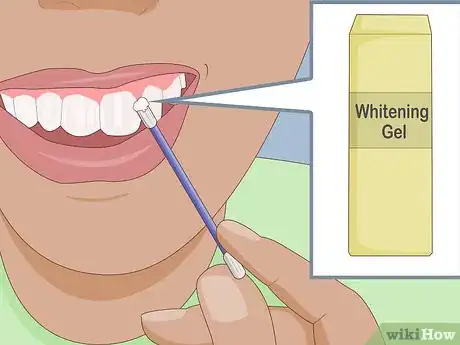
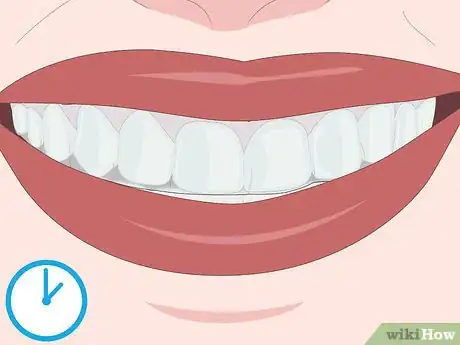
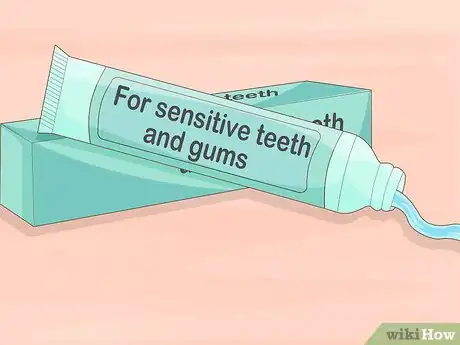

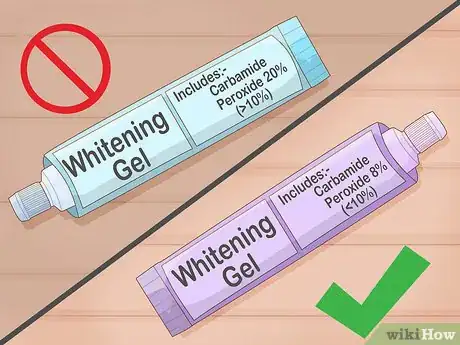
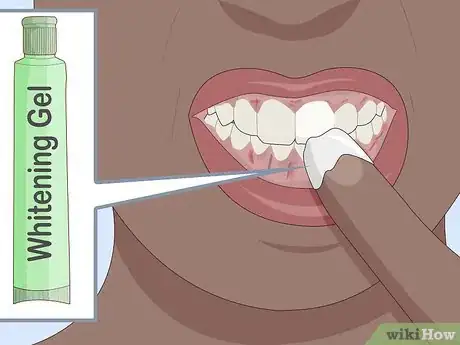
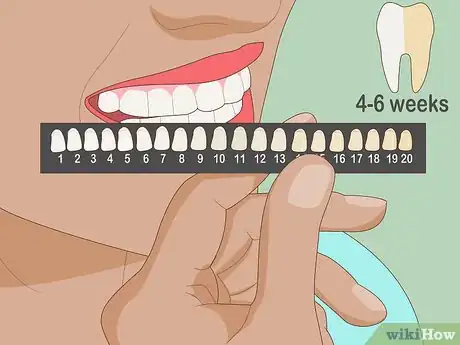



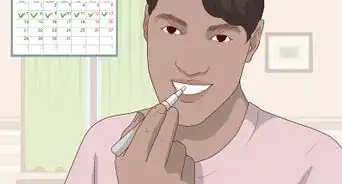
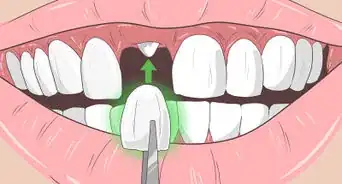



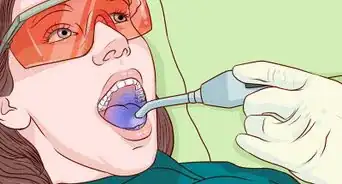

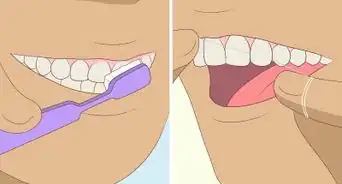
















































Medical Disclaimer
The content of this article is not intended to be a substitute for professional medical advice, examination, diagnosis, or treatment. You should always contact your doctor or other qualified healthcare professional before starting, changing, or stopping any kind of health treatment.
Read More...